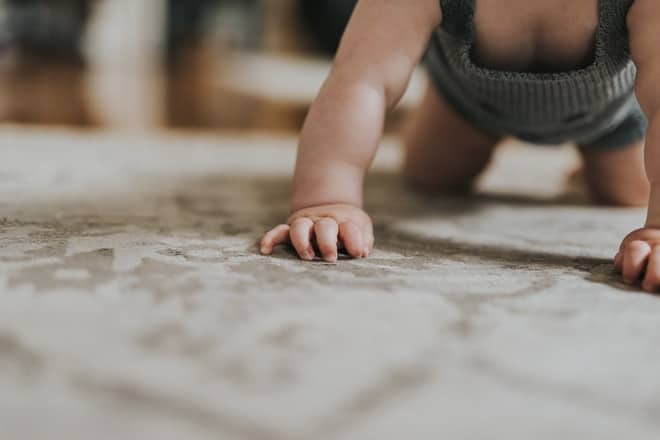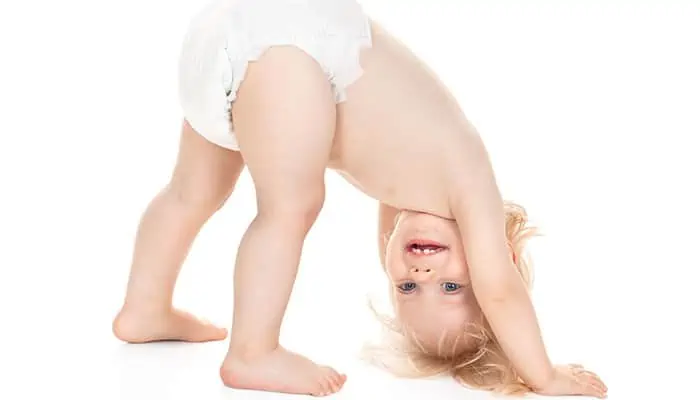Crawling is an important milestone for babies because it helps them develop the skills they need to walk and explore the world around them. There are several different types of baby crawling, and each one can help your child learn new things.

For example, army crawling allows babies to move quickly and explore their surroundings, while crab crawling helps them strengthen their muscles and learn how to balance. Ultimately, it’s important to let your child crawl however they choose, as each type of crawling offers its own unique set of benefits.
When a baby is born, they are automatically ready to start learning and growing. Babies go through different stages of development, and crawling is one of the most important milestones. Crawling typically happens around 6 months old, but every baby is different. Here are the six stages of crawling:
Belly Crawling
Belly crawling is a developmental milestone for babies in which they learn to push themselves up on their arms and crawl around on their bellies. This helps them develop strong muscles and coordination. Belly crawling also allows babies to explore their environments and learn about the world around them.
Hands and Knees Crawling
Hands and knees crawling is a developmental milestone that typically occurs during the second half of the first year of life. It refers to the ability to move around on all fours, supporting the body weight on hands and knees. This skill allows infants to explore their environment and move towards objects of interest.

Bear Crawl
Bear crawl is a movement pattern that is used by infants and toddlers to help them develop strength, coordination, and balance. The bear crawl involves getting on all fours and then walking forward on hands and feet. This movement pattern helps babies and toddlers learn how to control their body movements and helps improve their balance and coordination.
Crab Crawl
Crab Crawl is a baby crawling exercise that helps improve balance, coordination, and strength. The exercise involves babies crawling on their hands and feet while simultaneously raising their knees as high as possible. This movement helps to strengthen the baby’s abdominal muscles, arms, and legs. Crab Crawl is a great exercise to help improve baby’s mobility and strength as they develop.
Rolling Crawl
Rolling crawl is a crawling pattern that babies use in which they roll their bodies forward instead of moving their arms and legs separately. This pattern helps them move more quickly across the ground and explore their surroundings. Rolling crawl is often the first crawling pattern babies learn and can be seen in infants as young as 2-3 months old.
Bottom Scoot Crawl
Bottom scoot crawl is a crawling pattern that babies use to move around. Babies begin in a crawling position with their bottom on the ground and then scoot forward using their hands and feet. Once they reach the desired location, they then pull themselves up to a standing position. This crawling pattern helps babies gain strength and coordination.
What Is the Average Age for Crawling?
The average age for crawling is around 6 months, but every baby is different. Some babies may crawl as early as 4 months, while others may not crawl until they are 9 or 10 months old. There is no right or wrong answer – every baby develops at their own pace. Crawling is an important milestone, as it helps babies learn about their world and develop their motor skills.

Signs Your Baby Is Ready to Crawl
There are several signs that your baby is ready to crawl. One sign is that your baby can hold his or her head up well. Another sign is that your baby can push up on his or her arms and legs when lying on his or her stomach. A third sign is that your baby starts to scoot around on his or her bottom. When your baby does these things, it means he or she is getting ready to learn how to crawl.
Why You Must Fix Asymmetrical Crawling?
Asymmetrical crawling is a very common problem with babies. It can cause them to have problems when they learn to walk and can even lead to problems with their muscles and joints. Asymmetrical crawling is when one side of the baby’s body is stronger or moves more easily than the other side. This can be caused by many things, such as a difference in muscle strength or leg length.
Babies who crawl asymmetrically are more likely to have problems walking later on. Their muscles and joints may not be strong enough to support their weight, and they may lean to one side while walking. This can cause pain and make it difficult for the baby to move around. Asymmetrical crawling can also lead to joint problems in the future. It is important to fix asymmetrical crawling as soon as possible.
Conclusion
In conclusion, there are many different types of baby crawling. Some babies crawl on their hands and knees, while others crawl on their stomachs. Some babies even crawl on their backs! As a parent, it is important to be aware of the different types of baby crawling and how to help your child learn to crawl. Remember, every child is different and will learn at his or her own pace. Be patient and have fun with your little one as he or she learns to explore the world around them!










